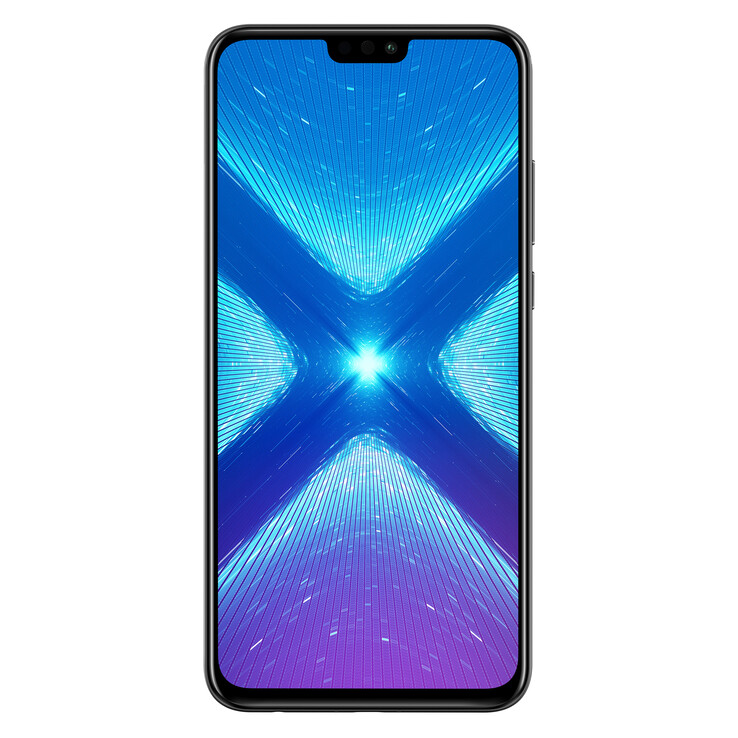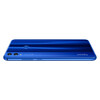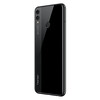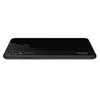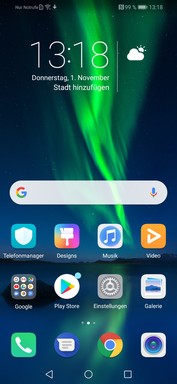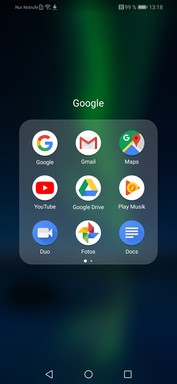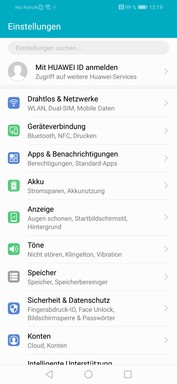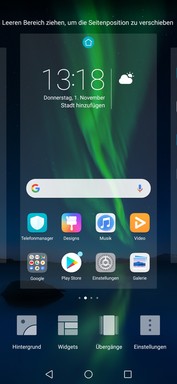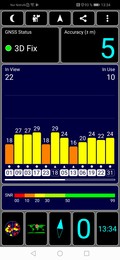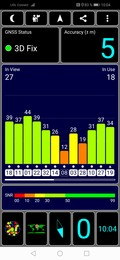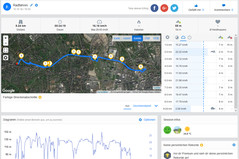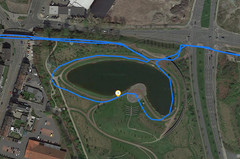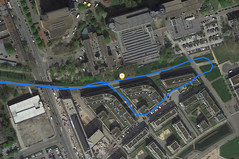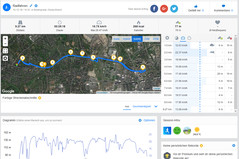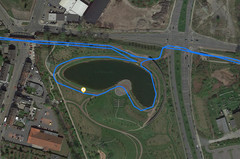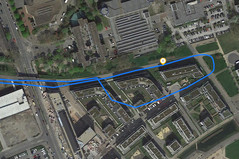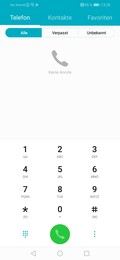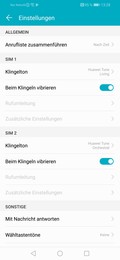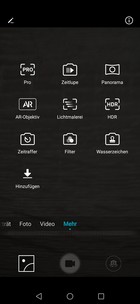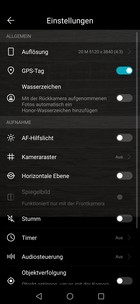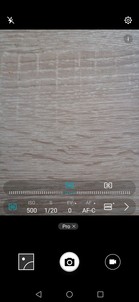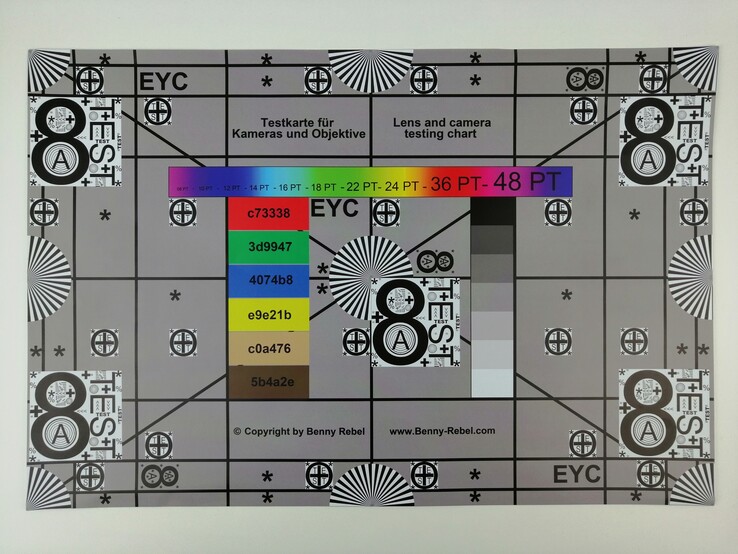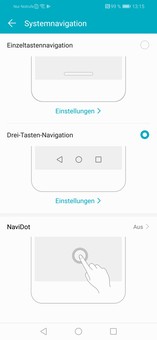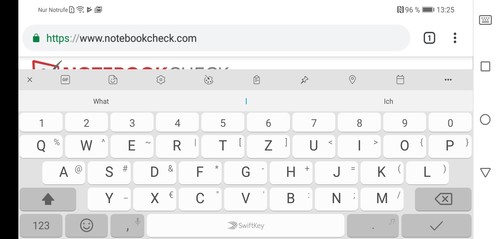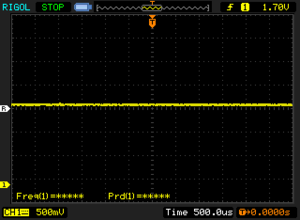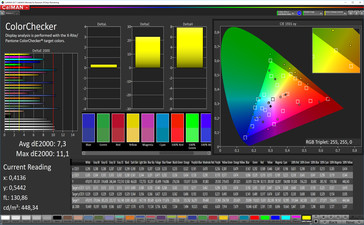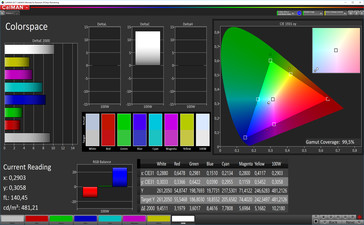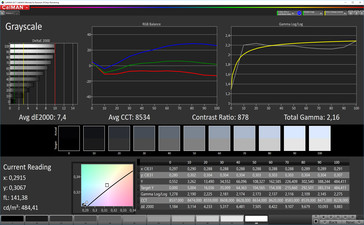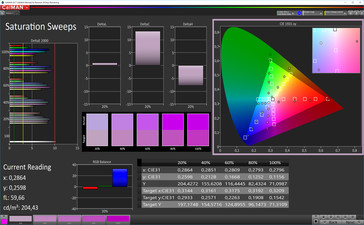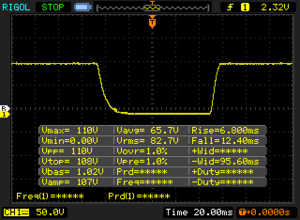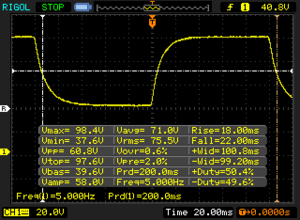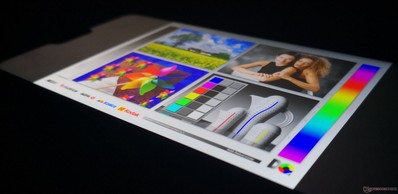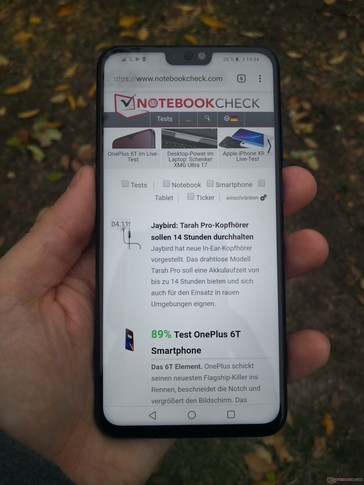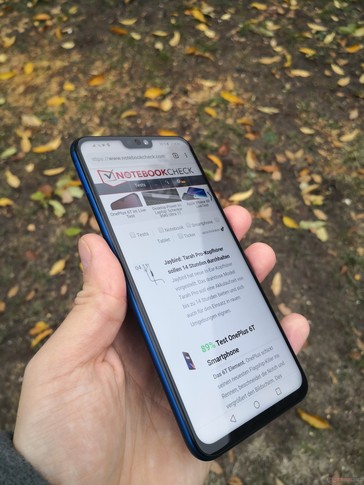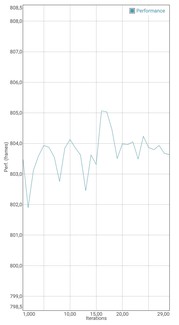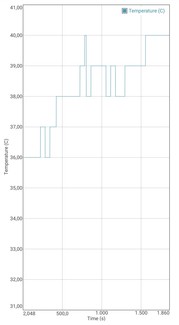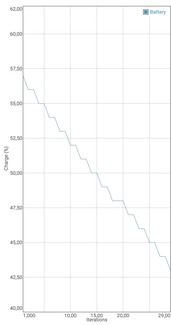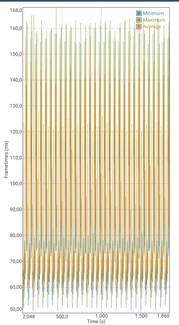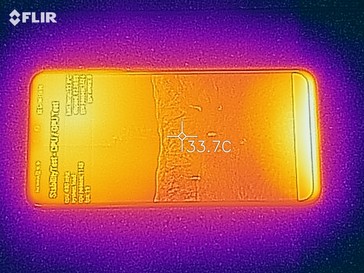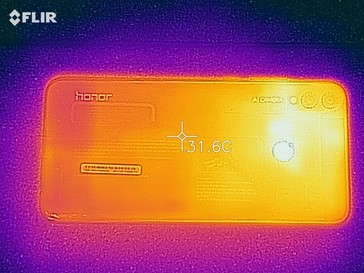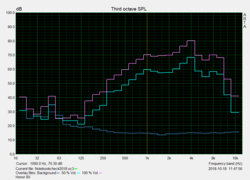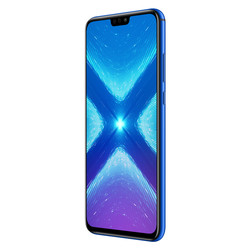Honor 8X Smartphone Review
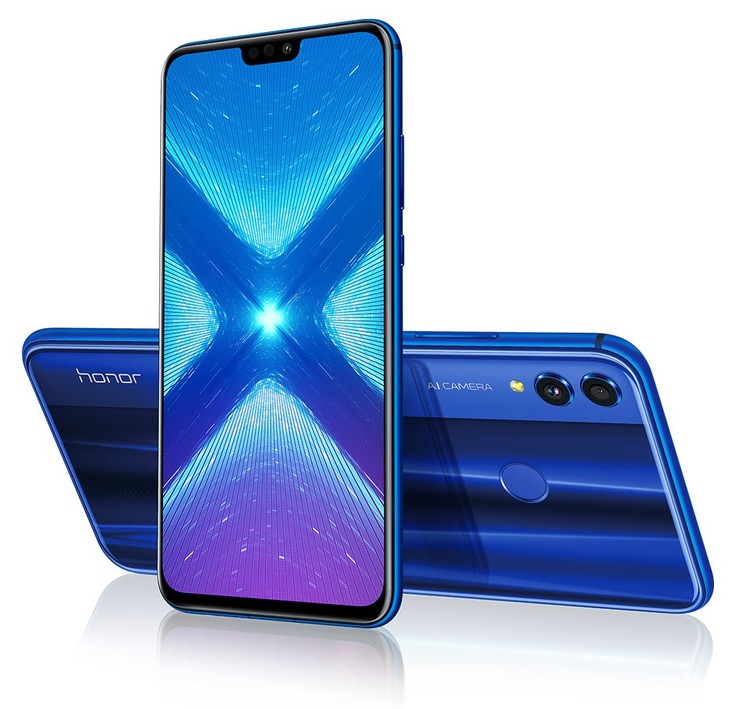
The 8X is a typical Honor smartphone. It offers attractive technical specifications at an affordable price. The subsidiary of the telecommunications company Huawei has given its new mid-range phone a high screen-to-body ratio with slim bezels on either side of the 6.5-inch Full HD+ display and the by now almost traditional display notch. This contains the 16-MP selfie camera as well as sensors and a status LED.
The Honor 8X is powered by the new HiSilicon Kirin 710 with its four Cortex A73 cores and four more Cortex A53 cores. The Mali-G51 graphics chip should reach its full potential thanks to GPU turbo technology. On the back, the manufacturer has placed a dual camera with a 20-MP main sensor and a 2-MP lens for more depth. The selfie camera on the front of the device offers 16 MP.
There is no price information available for the US at the time of writing. The configurations currently available in Europe offer 4 GB of RAM and either 64 GB (for 250€/ ~$290) or 128 GB of storage (for 300€/ ~$340). Competition is high in this price range and smartphones from the Far East in particular often offer very good technical specifications. Among these is the Xiaomi Mi 6X - also known as the Mi A2 available with Android One. But also more affordable mid-range devices such as the Nokia 6 (2018), the BQ Aquaris X2 and the very similar Huawei Mate 20 Lite are possible alternatives and have been included into our comparison field.
Case - a good-looking Honor phone
At 160 x 77 mm (~6.3 x 3 in) the Honor 8X cannot really be considered a compact phone. It weighs 175 grams (~6.2 oz) and is made of glass and metal, which gives it a high-quality feel. Due to the flat back and wide metal frame, the phablet feels quite large despite only being 7.8 mm (~0.31 in) thick. The device is very stable for a mid-range device. Our warping attempts did not have any effects on the device.
The 2.5D screen glass is slightly curved and flows into the case almost seamlessly. The sides of the 6.5-inch "SuperScreen FullView display" are very narrow. The chin below the display is also pleasingly small considering the price range of the Honor 8X. The display-to-surface ratio is 85%.
The fingerprint reader is positioned on the back, which looks very attractive thanks to a reflective lattice structure and 15 glass layers. The available colors are black, blue and red, although only black and blue are available at the time of writing.
The volume control and power button are of high quality. They sit tightly in the case and have good pressure points. However, these buttons are placed a little too high for normal-sized hands.
Connectivity - Honor 8X with 3.5-mm audio jack
The mid-range smartphone is equipped with a 3.5-inch audio jack, a status LED, a fingerprint reader and FaceUnlock. The wireless transmission of display content to external screens is supported via Miracast and worked very well in our test with a Sony Android TV.
The Dual-SIM smartphone has an additional slot for microSD cards. This enables users to expand the 128-GB internal eMMC storage by up to 400 GB. The microSD card cannot be configured as internal storage, but does support the exFAT file system. Users have 111 GB of internal storage available after initial setup.
The USB port has the old microUSB shape with a USB 2.0 connector. It works as a power supply and also supports USB OTG, which means that it can connect to external storage or input devices.
Software - Honor Smartphone with EMUI 8.2
As usual, Huawei has installed its own user interface, EMUI 8.2, on the Honor smartphone. This is based on the current Google Android version 8.2 and we can expect an update to Android 9 at the beginning of 2019, although there is no official date yet. The security patch in our test unit is dated September 2018.
The operating system is quite different compared to Vanilla Android with a different look for the user interface and additional software features. One of these is the "eye comfort" mode, which reduces the emission of blue light in order to avoid overstraining the eyes.
Communication and GPS - NFC is included
Users can use Bluetooth 4.2 for wireless communication between mobile devices. The Honor 8X also supports near field communication (NFC).
Honor has equipped its mid-range model with two Nano-SIM slots. The smartphone uses the LTE standard for both slots.
The Wi-Fi module supports the IEEE 802.11 standards a/b/g/n/ac and both the 2.4 and 5.0-GHz bands. We measured a relatively strong attenuation of -41 dBm at close vicinity to the router (Telekom Speedport, W921V).
Our Wi-Fi test measured transfer rates of around 200 MBit/s. These are slower than those of our comparison devices and not particularly good for a mid-range smartphone. The results with our reference router Linksys EA8500 are particularly low when sending data.
Caution: If you are thinking about importing the Honor 8X from China, you should make sure to purchase the model JSN-L21. The other versions of the phablet do not have dual-band Wi-Fi or NFC.
| Networking | |
| iperf3 transmit AX12 | |
| Nokia 6 2018 | |
| Xiaomi Mi 6X | |
| BQ Aquaris X2 | |
| Asus Zenfone 5 ZE620KL | |
| Huawei Mate 20 Lite | |
| Honor 8X | |
| iperf3 receive AX12 | |
| Asus Zenfone 5 ZE620KL | |
| Nokia 6 2018 | |
| BQ Aquaris X2 | |
| Xiaomi Mi 6X | |
| Huawei Mate 20 Lite | |
| Honor 8X | |
The Honor 8X uses the satellite systems GPS, Beidou and GLONASS for localization. This works quite quickly outdoors where our test unit positions us within 5 meters (~16 ft). Indoors, the phone needed a little longer to locate us due to a less stable connection, but it still worked.
In order to find out how precise our test unit is in practice, we compared it against the bike navigation system Garmin Edge 500. After a 9-km (~5.6 mi) bike ride, during which both devices tracked our movements, the difference in the measured route length was 30 meters (~98 ft). This is very good for a device of this price range.
Telephone and Voice Quality
The voice quality of the Honor smartphone is good using the German Vodafone network and enables clear communication on both sides. The phablet also supports modern standards such as VoLTE and Wi-Fi Calling.
In addition, the manufacturer has advertised its AI communication feature, with which artificial intelligence recognizes weak signals or strong interference automatically in order to optimize the signal and voice quality. It also recognizes changes to the signal strength, for example, when you are in an elevator, and automatically restores 4G connections immediately after leaving the elevator.
Cameras - good selfie camera
The main camera on the back has two lenses. While the main lens has an aperture of f/1.8 and 3968x2976 pixels (20 MP) in the 4:3 format, the second lens only has 2 MP. This can be used to give the image more depth, which enables good Bokeh effects with blurry backgrounds. The AI multi scene recognition differentiates between 22 different categories and 500 scenes in real time.
The main camera has access to a dual-tone LED flash for taking photos in bad lighting conditions. Image stabilization is only software-based and there is no optical image stabilizer (OIS). The camera does not support recording videos in 4K resolution either.
The camera quality of the Honor 8X is good - particularly in good lighting conditions. The dynamics are rather low, however, which means that certain details are often lost. Portraits can look rather unnatural.
The biggest weakness of the back camera is its bad low-light performance. There is significant image noise in bad lighting and the images are blurrier. The night mode works well on unmoving objects, although colors are not always displayed accurately and tend to be oversaturated.
Lovers of selfies will not be disappointed by the Honor 8X. The quality of photos taken with the front camera is good and the images are sharp, as long as users keep the necessary distance for the fixed focus. Like the Xiaomi Redmi Note 6 Pro, the front camera of the Honor 8X supports the so-called "4-in-1 Light Fusion" mode, which combines four pixels to one super pixel with a pixel size of 1.8 μm. This enables pictures taken with the 16-MP camera with an aperture of f/2.0 to be sufficiently light even in bad lighting. The front camera records videos at 1080p with up to 30 frames per second.
Accessories and Warranty - silicone case included
The Honor 8X comes with a QuickStart guide, a modular power supply with a rated output of 10 watts (5V, 2A), a USB cable, a screen protector (already applied) and a silicone case. Headphones are not included.
Huawei and its various subsidiaries, including Honor, give their smartphones a 24-month warranty. Please see our Guarantees, Return policies and Warranties FAQ for country-specific information.
Input Devices & Handling - Honor 8X with FaceUnlock
Honor has given its mid-range model the OnScreen navigation buttons typical for Android (in the bottom third of the screen). Alternatively, the display can also be controlled using a single navigation key. The capacitive touchscreen recognizes up to nine inputs simultaneously and has a smooth glass surface with good gliding properties. The multi-touch screen responds precisely to inputs even at the sides.
The Chinese manufacturer has pre-installed the SwiftKey keyboard on the Honor 8X.
The mid-range smartphone can be unlocked using biometric identification via the fingerprint sensor and/or face recognition software. The active fingerprint sensor on the back works reliably, but is not particularly quick. The same can be said for the FaceUnlock function.
Display - IPS panel with mediocre contrast
The 6.5-inch LC display in the Honor 8X has a resolution of 2340x1080 pixels (Full HD+) and a 19.5:9 aspect ratio. The resulting pixel density of around 400 PPI makes the content appear quite sharp on the smartphone. This is fully sufficient for everyday use despite the large display.
The maximum display brightness is 484 cd/m² and the brightness distribution is 93%. The ambient light sensor does not change the maximum brightness. Our realistic APL50 measurement, which simulates the even distribution of light and dark areas on the IPS panel, results in 468 cd/m².
| |||||||||||||||||||||||||
Brightness Distribution: 93 %
Center on Battery: 484 cd/m²
Contrast: 880:1 (Black: 0.55 cd/m²)
ΔE ColorChecker Calman: 7.3 | ∀{0.5-29.43 Ø4.77}
ΔE Greyscale Calman: 7.4 | ∀{0.09-98 Ø5}
99.5% sRGB (Calman 2D)
Gamma: 2.16
CCT: 8534 K
| Honor 8X LCD IPS, 2340x1080, 6.5" | Huawei Mate 20 Lite IPS, 2340x1080, 6.3" | Xiaomi Mi 6X LCD IPS, 2160x1080, 6" | Asus Zenfone 5 ZE620KL IPS, 2246x1080, 6.2" | BQ Aquaris X2 IPS LCD, 2160x1080, 5.7" | Nokia 6 2018 IPS, 1920x1080, 5.5" | |
|---|---|---|---|---|---|---|
| Screen | -3% | 5% | 24% | 18% | -5% | |
| Brightness middle (cd/m²) | 484 | 453 -6% | 459 -5% | 595 23% | 631 30% | 417 -14% |
| Brightness (cd/m²) | 469 | 460 -2% | 441 -6% | 561 20% | 622 33% | 421 -10% |
| Brightness Distribution (%) | 93 | 89 -4% | 91 -2% | 87 -6% | 96 3% | 88 -5% |
| Black Level * (cd/m²) | 0.55 | 0.52 5% | 0.47 15% | 0.54 2% | 0.61 -11% | 0.61 -11% |
| Contrast (:1) | 880 | 871 -1% | 977 11% | 1102 25% | 1034 18% | 684 -22% |
| Colorchecker dE 2000 * | 7.3 | 7.1 3% | 5.8 21% | 4.2 42% | 5.5 25% | 6.1 16% |
| Colorchecker dE 2000 max. * | 11.1 | 11.6 -5% | 10.7 4% | 6 46% | 8.5 23% | 11.2 -1% |
| Greyscale dE 2000 * | 7.4 | 8.3 -12% | 7.3 1% | 4.7 36% | 5.6 24% | 7.1 4% |
| Gamma | 2.16 102% | 2.35 94% | 2.28 96% | 2.12 104% | 2.38 92% | 2.16 102% |
| CCT | 8534 76% | 9082 72% | 7984 81% | 7577 86% | 7531 86% | 8362 78% |
* ... smaller is better
Screen Flickering / PWM (Pulse-Width Modulation)
| Screen flickering / PWM not detected | |||
In comparison: 53 % of all tested devices do not use PWM to dim the display. If PWM was detected, an average of 8091 (minimum: 5 - maximum: 343500) Hz was measured. | |||
Both the black value of 0.55 cd/m² and the contrast ratio of 900:1 are average for this price range. The contrast ratio is even worse in our APL50 test. We measured 851:1 here while the black value remained the same.
The analysis with the spectrophotometer and the CalMAN software showed average DeltaE deviations from the sRGB color space (7.3 for colors and 7.4 for grayscales). The ideal value is below three. As with the Huawei Mate 20 Lite, the color temperature is far from ideal at 8500 K instead of 6500 K. The IPS panel covers the sRGB color space almost completely.
Display Response Times
| ↔ Response Time Black to White | ||
|---|---|---|
| 19.2 ms ... rise ↗ and fall ↘ combined | ↗ 6.8 ms rise | |
| ↘ 12.4 ms fall | ||
| The screen shows good response rates in our tests, but may be too slow for competitive gamers. In comparison, all tested devices range from 0.1 (minimum) to 240 (maximum) ms. » 41 % of all devices are better. This means that the measured response time is similar to the average of all tested devices (20.2 ms). | ||
| ↔ Response Time 50% Grey to 80% Grey | ||
| 40 ms ... rise ↗ and fall ↘ combined | ↗ 18 ms rise | |
| ↘ 22 ms fall | ||
| The screen shows slow response rates in our tests and will be unsatisfactory for gamers. In comparison, all tested devices range from 0.165 (minimum) to 636 (maximum) ms. » 60 % of all devices are better. This means that the measured response time is worse than the average of all tested devices (31.6 ms). | ||
Performance - the Kirin 710 often reaches its limits
The HiSilicon Kirin 710 chip that powers the Honor 8X has four ARM Cortex A73 cores that clock at up to 2.2 GHz and four Cortex A53 cores that clock at up to 1.7 GHz (big.LITTLE, manufactured using the 12-nm process). Like the Kirin 970, this mid-range SoC supports GPU turbo and an integrated neural processing unit NPU that is responsible for AI functions in the smartphone. The integrated graphics card is an ARM Mali-G51 MP4.
The Kirin 710 working in combination with 4 GB of RAM is on par with the Qualcomm Snapdragon 636. The results of graphically demanding test are quite far behind devices such as the Xiaomi Mi 6X (Mi A2), which is equipped with a Snapdragon 660. However, recent information on several Huawei devices falsifying their benchmark results should be taken into account when looking at these values.
The system performance is usually good, although there are some minor hiccups and lags during multi-tasking. Like its predecessor, the mid-range processor cannot always handle everyday tasks - or at least not with the current EMUI OS.
| PCMark for Android | |
| Work performance score (sort by value) | |
| Honor 8X | |
| Huawei Mate 20 Lite | |
| Xiaomi Mi 6X | |
| Asus Zenfone 5 ZE620KL | |
| BQ Aquaris X2 | |
| Nokia 6 2018 | |
| Average HiSilicon Kirin 710 (7004 - 9854, n=13) | |
| Work 2.0 performance score (sort by value) | |
| Honor 8X | |
| Huawei Mate 20 Lite | |
| Xiaomi Mi 6X | |
| Asus Zenfone 5 ZE620KL | |
| BQ Aquaris X2 | |
| Nokia 6 2018 | |
| Average HiSilicon Kirin 710 (5803 - 7141, n=12) | |
| Basemark GPU 1.1 | |
| 1920x1080 Vulkan Medium Offscreen (sort by value) | |
| Honor 8X | |
| Huawei Mate 20 Lite | |
| Average HiSilicon Kirin 710 (7.38 - 8, n=2) | |
| Vulkan Medium Native (sort by value) | |
| Honor 8X | |
| Huawei Mate 20 Lite | |
| Xiaomi Mi 6X | |
| BQ Aquaris X2 | |
| Average HiSilicon Kirin 710 (7.26 - 9.43, n=2) | |
| 1920x1080 OpenGL Medium Offscreen (sort by value) | |
| Honor 8X | |
| Huawei Mate 20 Lite | |
| Xiaomi Mi 6X | |
| BQ Aquaris X2 | |
| Average HiSilicon Kirin 710 (10.3 - 10.3, n=2) | |
| AnTuTu v7 - Total Score (sort by value) | |
| Honor 8X | |
| Huawei Mate 20 Lite | |
| Xiaomi Mi 6X | |
| Asus Zenfone 5 ZE620KL | |
| BQ Aquaris X2 | |
| Nokia 6 2018 | |
| Average HiSilicon Kirin 710 (124870 - 183420, n=10) | |
| AnTuTu v6 - Total Score (sort by value) | |
| Honor 8X | |
| Huawei Mate 20 Lite | |
| Xiaomi Mi 6X | |
| Asus Zenfone 5 ZE620KL | |
| BQ Aquaris X2 | |
| Nokia 6 2018 | |
| Average HiSilicon Kirin 710 (104012 - 112870, n=8) | |
| VRMark - Amber Room (sort by value) | |
| Honor 8X | |
| Huawei Mate 20 Lite | |
| Xiaomi Mi 6X | |
| BQ Aquaris X2 | |
| Average HiSilicon Kirin 710 (961 - 1146, n=3) | |
| Basemark ES 3.1 / Metal - offscreen Overall Score (sort by value) | |
| Honor 8X | |
| Huawei Mate 20 Lite | |
| Xiaomi Mi 6X | |
| BQ Aquaris X2 | |
| Average HiSilicon Kirin 710 (431 - 431, n=2) | |
| Average of class Smartphone (205 - 7731, n=34, last 2 years) | |
The phablet's browser performance using the pre-installed Chrome browser is satisfactory. Websites load quickly, and scrolling is smooth for the most part with occasional hiccups. This positions the Honor smartphone in the upper mid-range of its comparison field.
| JetStream 1.1 - Total Score | |
| Xiaomi Mi 6X (Chrome 67) | |
| Asus Zenfone 5 ZE620KL (Chrome 67) | |
| Average HiSilicon Kirin 710 (47 - 55.1, n=10) | |
| Huawei Mate 20 Lite (Chrome 69) | |
| Honor 8X (Chrome 70) | |
| BQ Aquaris X2 (Chrome 67) | |
| Nokia 6 2018 (Browser: Chrome 65) | |
| Octane V2 - Total Score | |
| Average of class Smartphone (2228 - 121337, n=195, last 2 years) | |
| Xiaomi Mi 6X (Chrome 67) | |
| Asus Zenfone 5 ZE620KL (Chrome 67) | |
| Average HiSilicon Kirin 710 (9041 - 10544, n=13) | |
| Honor 8X (Chrome 70) | |
| Huawei Mate 20 Lite (Chrome 69) | |
| BQ Aquaris X2 (Chrome 67) | |
| Nokia 6 2018 (Browser: Chrome 65) | |
| Mozilla Kraken 1.1 - Total | |
| Nokia 6 2018 (Browser: Chrome 65) | |
| Xiaomi Mi 6X (Chrome 67) | |
| BQ Aquaris X2 | |
| Honor 8X | |
| Average HiSilicon Kirin 710 (3999 - 4853, n=13) | |
| Huawei Mate 20 Lite (Chrome 69) | |
| Asus Zenfone 5 ZE620KL (Chrome 67) | |
| Average of class Smartphone (257 - 28190, n=154, last 2 years) | |
| WebXPRT 3 - Overall | |
| Average of class Smartphone (38 - 380, n=31, last 2 years) | |
| Average HiSilicon Kirin 710 (52 - 69, n=11) | |
| Xiaomi Mi 6X (Chrome 67) | |
| Huawei Mate 20 Lite (Chrome 69) | |
| Honor 8X (Chrome 70) | |
| BQ Aquaris X2 (Chrome 67) | |
| Nokia 6 2018 (Chrome 66) | |
| WebXPRT 2015 - Overall | |
| Xiaomi Mi 6X (Chrome 67) | |
| BQ Aquaris X2 (Chrome 67) | |
| Average HiSilicon Kirin 710 (147 - 178, n=5) | |
| Huawei Mate 20 Lite (Chrome 69) | |
| Honor 8X (Chrome 70) | |
| Nokia 6 2018 | |
* ... smaller is better
The speed of the internal eMMC storage is sufficient during sequential reading and when reading small amounts of data. The Honor 8X is also one of the front-runners when it comes to writing. Compared to a flagship smartphone from 2018, the access rates are very slow.
We also took a closer look at the microSD card slot. Its performance was tested with our reference card, the Toshiba Exceria Pro M501 (writing: 270 MBit/s, reading: 150 MBit/s). The results are slightly below average for this price range.
| Honor 8X | Huawei Mate 20 Lite | Xiaomi Mi 6X | Asus Zenfone 5 ZE620KL | BQ Aquaris X2 | Nokia 6 2018 | Average 128 GB eMMC Flash | Average of class Smartphone | |
|---|---|---|---|---|---|---|---|---|
| AndroBench 3-5 | 13% | -6% | 19% | -13% | -22% | 14% | 663% | |
| Sequential Read 256KB (MB/s) | 283.9 | 304.3 7% | 272 -4% | 286.6 1% | 270.5 -5% | 272.6 -4% | 300 ? 6% | 2243 ? 690% |
| Sequential Write 256KB (MB/s) | 170 | 217.3 28% | 203.7 20% | 201.8 19% | 188.7 11% | 118.3 -30% | 195.1 ? 15% | 1865 ? 997% |
| Random Read 4KB (MB/s) | 49.54 | 78.5 58% | 73 47% | 71.2 44% | 43.9 -11% | 38.78 -22% | 85.9 ? 73% | 296 ? 497% |
| Random Write 4KB (MB/s) | 59.9 | 48.78 -19% | 6.89 -88% | 83.5 39% | 14.4 -76% | 15.3 -74% | 58.1 ? -3% | 339 ? 466% |
| Sequential Read 256KB SDCard (MB/s) | 75.2 ? | 76.4 ? 2% | 85.8 ? 14% | 82.9 ? 10% | 83.4 ? 11% | 78.1 ? 4% | ||
| Sequential Write 256KB SDCard (MB/s) | 68.1 ? | 67.8 ? 0% | 65.2 ? -4% | 62.3 ? -9% | 61.3 ? -10% | 61.8 ? -9% |
Games - Current games can only be played under certain conditions with the Mali-G51
The ARM Mali-G51 MP4 is a mid-range graphics unit that is based on Bifrost architecture. The MP4 version in the Honor 8X uses 4 cores and clocks at up to 650 MHz. The GPU supports all modern graphics APIs such as OpenGL ES 3.2, Vulkan 1.0, OpenCL 2.0 as well as DirectX 11 and Renderscript.
Current Android games from the PlayStore that are graphically demanding such as “PUBG Mobile” cannot be displayed smoothly at high details by the Mali-G51. According to our measurements, made with the Gamebench app, the Honor smartphone reaches an average frame rate of 27 FPS. However, the frame rate regularly collapses at short intervals. Games that are not quite up-to-date anymore, such as the 3D shooter “Dead Trigger 2”, can be played smoothly at 60 FPS in maximum details.
Both the touchscreen and the sensors respond reliably.
Asphalt 9 Legends
Dead Trigger 2
Emissions - the Honor 8X does not throttle under load
Temperature
The surface temperature is nothing to worry about. Even during long gaming sessions, the Honor 8X will never become uncomfortably warm. We measured a maximum of 36 °C (~97 °F) under strong continuous load.
We used the battery test GFXBench 3.1 to find out whether the SoC throttled under strong load. During this test, the same sequence is repeated for 30 times and the results are recorded. The Honor 8X managed to keep up a very consistent frame rate with the fluctuations being limited to below 1%. This means that it is improbable that users will encounter any throttling under load.
(+) The maximum temperature on the upper side is 35.7 °C / 96 F, compared to the average of 35.2 °C / 95 F, ranging from 21.9 to 247 °C for the class Smartphone.
(+) The bottom heats up to a maximum of 35.5 °C / 96 F, compared to the average of 34 °C / 93 F
(+) In idle usage, the average temperature for the upper side is 27 °C / 81 F, compared to the device average of 32.9 °C / 91 F.
Speakers
The maximum volume of the single speaker, positioned on the bottom of the device, is sufficient at 85 dB(A). The sound quality is average and unbalanced. Our Pink Noise measurements show a rather irregular sound reproduction of mids and highs and the bass frequencies are low, as expected.
Users can also use the 3.5-inch audio jack to connect external speakers or headphones. Subjectively, we would say that music is sufficiently loud and noise-free.
Honor 8X audio analysis
(+) | speakers can play relatively loud (84.8 dB)
Bass 100 - 315 Hz
(-) | nearly no bass - on average 28.3% lower than median
(±) | linearity of bass is average (10.1% delta to prev. frequency)
Mids 400 - 2000 Hz
(+) | balanced mids - only 4.1% away from median
(+) | mids are linear (4.8% delta to prev. frequency)
Highs 2 - 16 kHz
(±) | higher highs - on average 5.3% higher than median
(±) | linearity of highs is average (8% delta to prev. frequency)
Overall 100 - 16.000 Hz
(±) | linearity of overall sound is average (23.8% difference to median)
Compared to same class
» 54% of all tested devices in this class were better, 8% similar, 38% worse
» The best had a delta of 11%, average was 35%, worst was 134%
Compared to all devices tested
» 71% of all tested devices were better, 6% similar, 23% worse
» The best had a delta of 4%, average was 24%, worst was 134%
Huawei Mate 20 Lite audio analysis
(+) | speakers can play relatively loud (84.1 dB)
Bass 100 - 315 Hz
(-) | nearly no bass - on average 31.6% lower than median
(±) | linearity of bass is average (9.4% delta to prev. frequency)
Mids 400 - 2000 Hz
(±) | reduced mids - on average 6.1% lower than median
(+) | mids are linear (5.8% delta to prev. frequency)
Highs 2 - 16 kHz
(±) | higher highs - on average 8.6% higher than median
(+) | highs are linear (3.6% delta to prev. frequency)
Overall 100 - 16.000 Hz
(±) | linearity of overall sound is average (27.3% difference to median)
Compared to same class
» 70% of all tested devices in this class were better, 5% similar, 24% worse
» The best had a delta of 11%, average was 35%, worst was 134%
Compared to all devices tested
» 83% of all tested devices were better, 4% similar, 13% worse
» The best had a delta of 4%, average was 24%, worst was 134%
Battery Runtime - the Honor phone lasts a long time
Power Consumption
The Honor 8X with its Kirin 710 is not particularly energy-efficient. Still, its power consumption while idling and under load is acceptable.
| Off / Standby | |
| Idle | |
| Load |
|
Key:
min: | |
| Honor 8X 3750 mAh | Huawei Mate 20 Lite 3750 mAh | Xiaomi Mi 6X 3010 mAh | Asus Zenfone 5 ZE620KL 3300 mAh | BQ Aquaris X2 3100 mAh | Nokia 6 2018 3000 mAh | Average HiSilicon Kirin 710 | Average of class Smartphone | |
|---|---|---|---|---|---|---|---|---|
| Power Consumption | 0% | 11% | -96% | 7% | 27% | -10% | -14% | |
| Idle Minimum * (Watt) | 0.92 | 1.01 -10% | 0.65 29% | 1.75 -90% | 0.65 29% | 0.67 27% | 1.058 ? -15% | 0.845 ? 8% |
| Idle Average * (Watt) | 2.3 | 2.21 4% | 1.94 16% | 4.48 -95% | 2.24 3% | 1.76 23% | 2.2 ? 4% | 1.44 ? 37% |
| Idle Maximum * (Watt) | 2.32 | 2.23 4% | 1.97 15% | 4.5 -94% | 2.26 3% | 1.78 23% | 2.57 ? -11% | 1.625 ? 30% |
| Load Average * (Watt) | 4.37 | 4.06 7% | 4.65 -6% | 7.92 -81% | 3.87 11% | 2.82 35% | 4.61 ? -5% | 7.01 ? -60% |
| Load Maximum * (Watt) | 6.13 | 6.32 -3% | 5.93 3% | 13.62 -122% | 6.8 -11% | 4.56 26% | 7.6 ? -24% | 11.3 ? -84% |
* ... smaller is better
Battery Runtime
With a battery runtime of over 14 hours during our Wi-Fi browsing test at adjusted brightness, the Honor 8X offers quite good results. The 3750-mAh battery needs over two hours to recharge fully with its 10-W power supply.
| Honor 8X 3750 mAh | Huawei Mate 20 Lite 3750 mAh | Xiaomi Mi 6X 3010 mAh | Asus Zenfone 5 ZE620KL 3300 mAh | BQ Aquaris X2 3100 mAh | Nokia 6 2018 3000 mAh | |
|---|---|---|---|---|---|---|
| Battery runtime | ||||||
| WiFi v1.3 (h) | 14.2 | 14 -1% | 8.3 -42% | 8.3 -42% | 10.3 -27% | 15.7 11% |
Pros
Cons
Verdict - appealing mid-range smartphone with a rather high retail price
The Honor 8X is a well-made and good-looking mid-range smartphone (despite having a display notch). The new mid-range processor Kirin 710 supplies the Honor phone with sufficient power, but does cause some hiccups during everyday use. The good battery runtimes, low temperature development and precise GPS make up for this weakness. In addition, the Honor 8X has great workmanship, although the position of the controls and fingerprint sensor as well as the flat back are not ideal when it comes to ergonomics.
We will most probably never know why the Honor 8 is already equipped with a modern USB Type-C port while the 8X model only has an old microUSB connector available.
In times of constantly improving quality of mid-range smartphones, not every Honor model automatically offers great value for money. If the street price drops a little, the Honor 8X could still be very attractive for lovers of phablets.
The typically excellent price-to-performance ratio of the Chinese manufacturer's devices does not apply to the 8X - or at least not at its current price point of around 250€ (~$290, the US price for the Honor 8X has not yet been announced). Other smartphones offer a similar package for less money - the Xiaomi Mi A2 in particular seems quite promising and offers better speeds and updates thanks to its Snapdragon 660 and the Android One program.
Honor 8X
- 11/05/2018 v6 (old)
Marcus Herbrich





